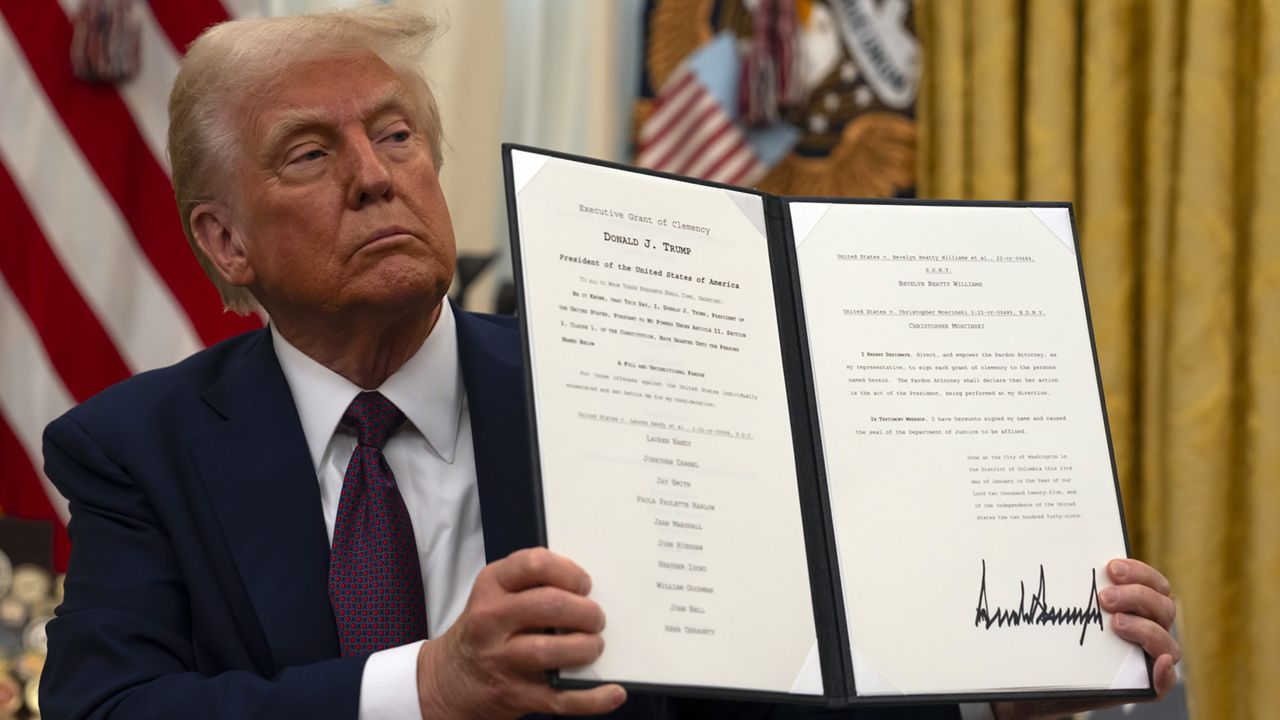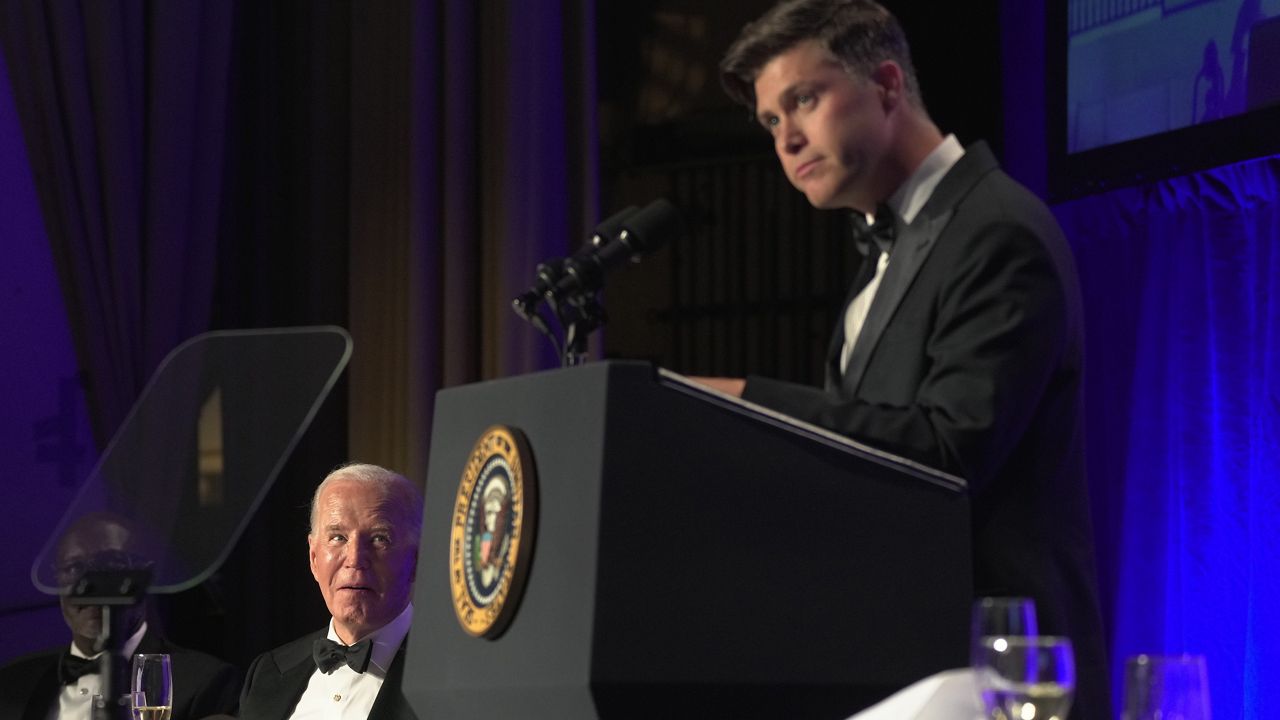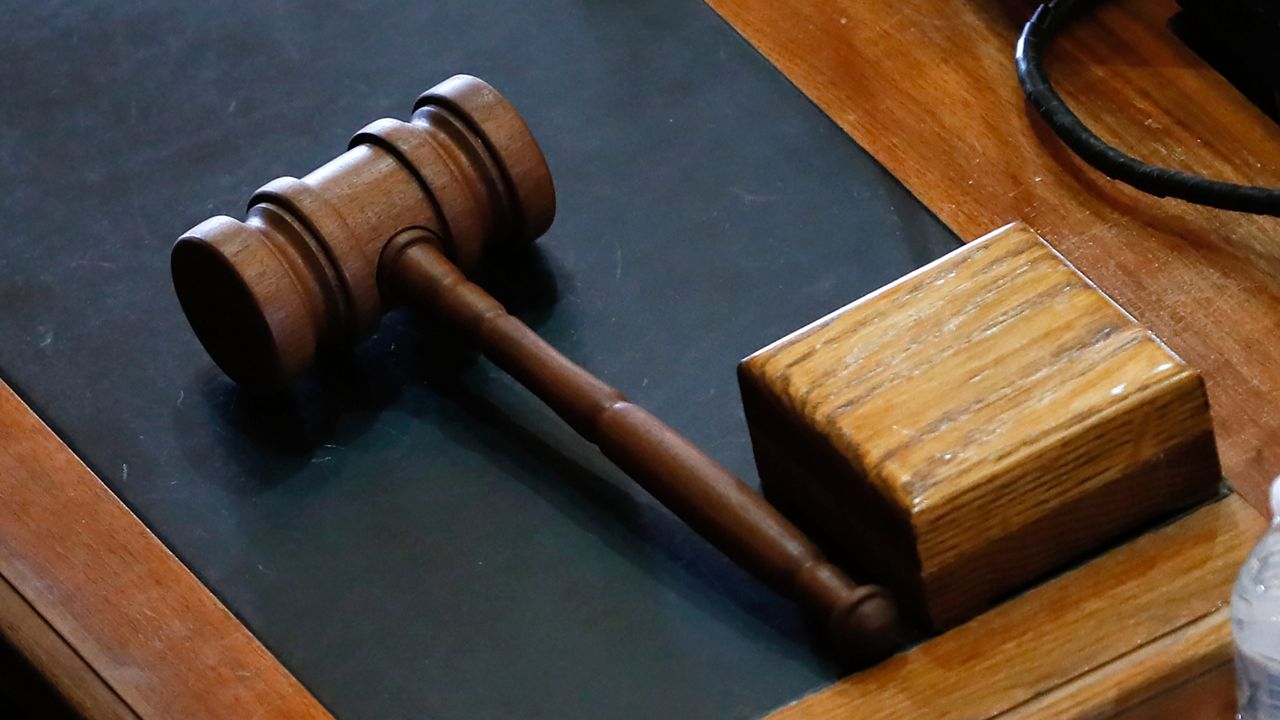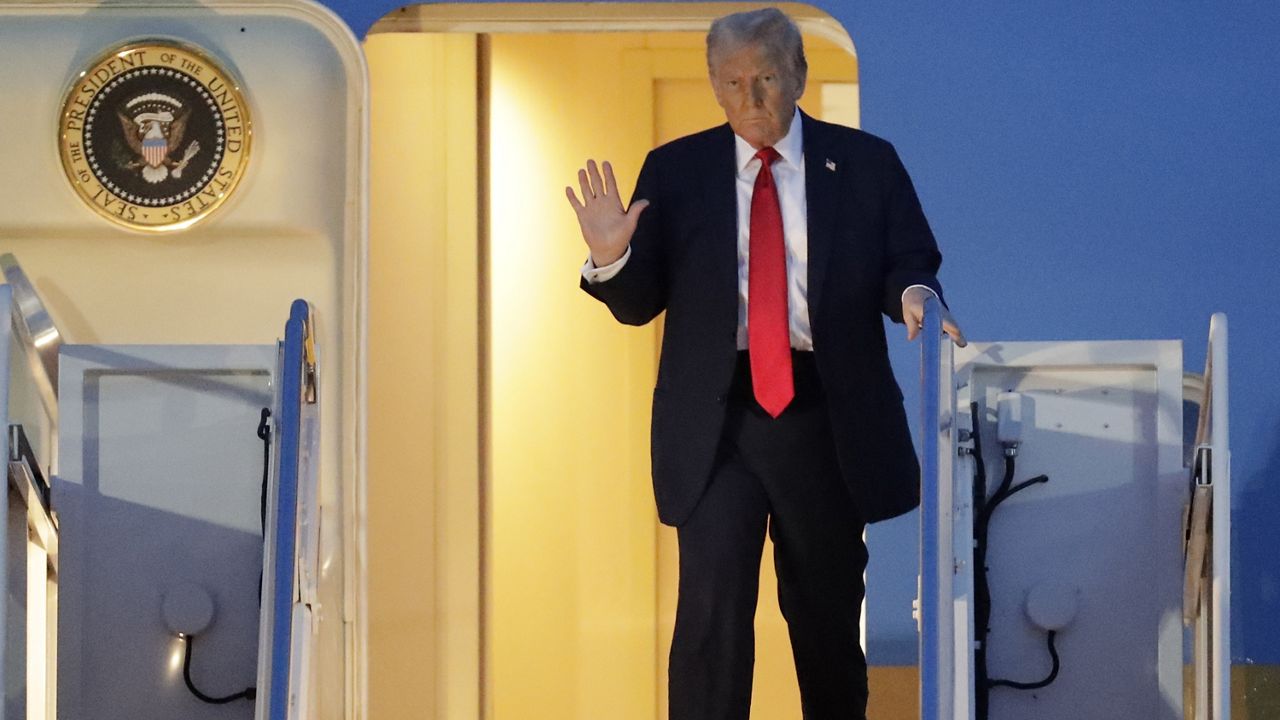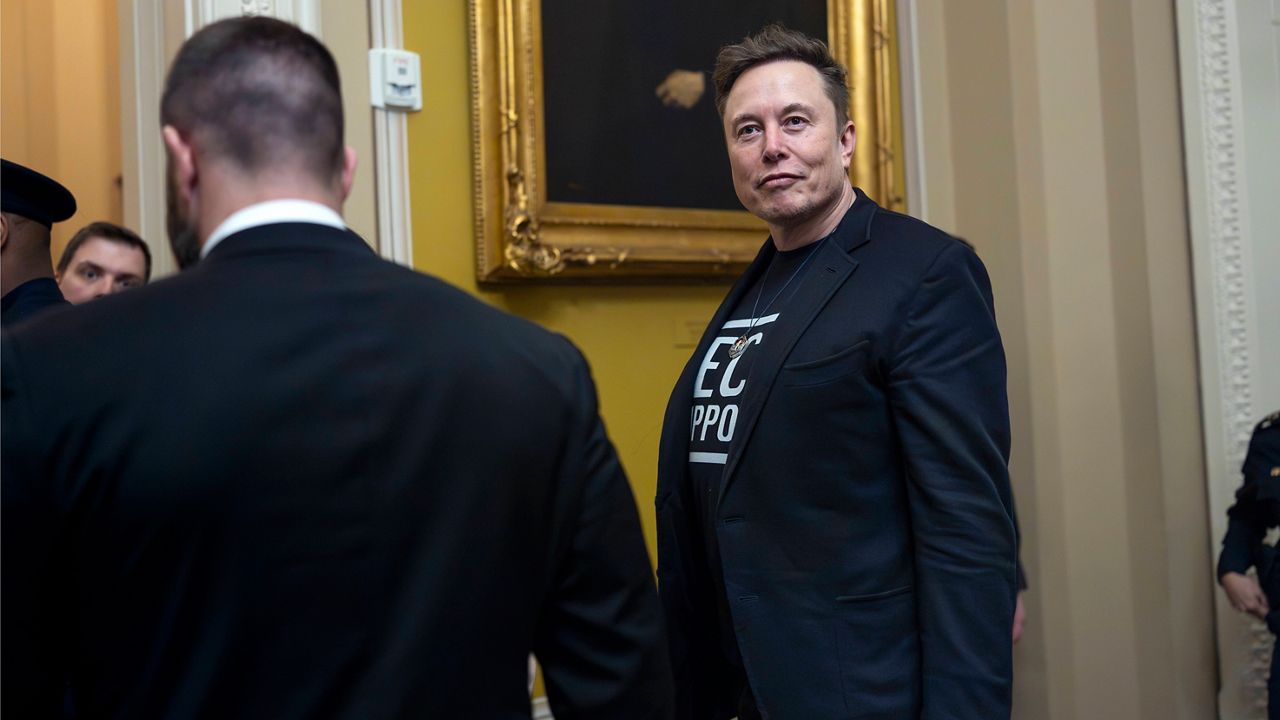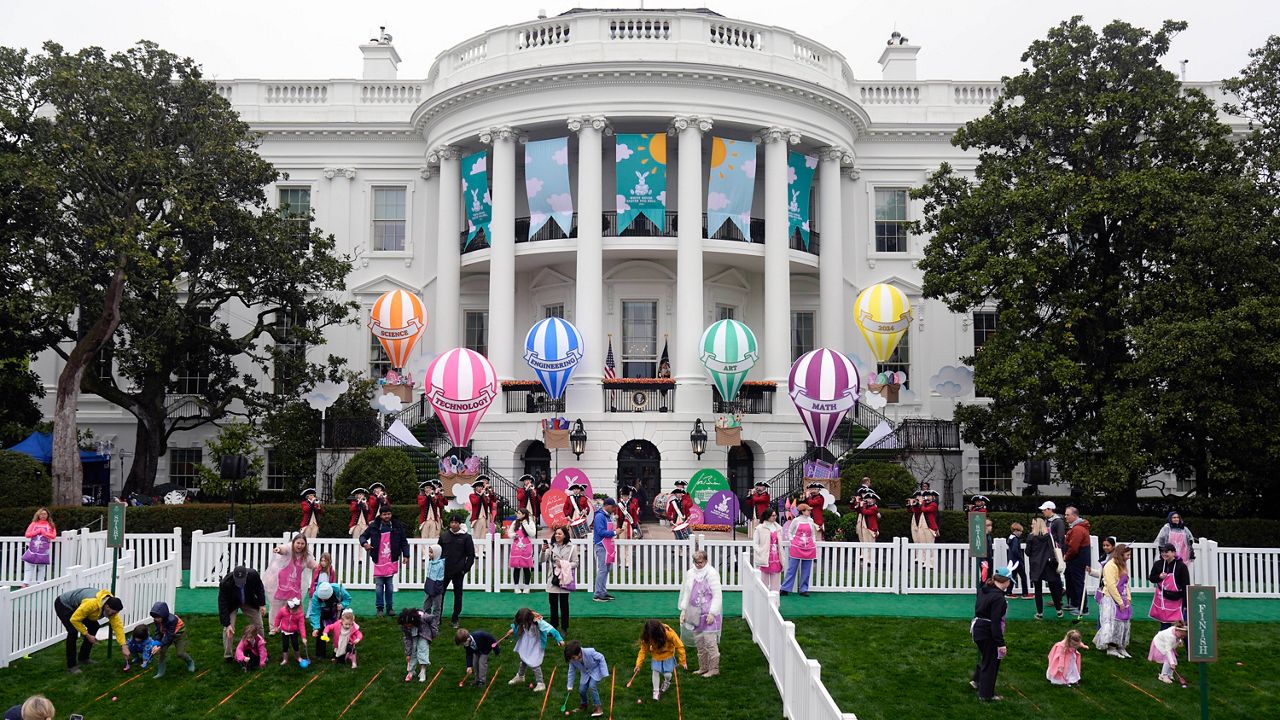WASHINGTON — In his first 10 weeks back in the White House, President Donald Trump has wasted little time applying the authorities of the executive office to make progress on a swath of his second-term policy priorities. Thus far, those priorities have ranged from deportations to tariffs to his far-reaching government downsizing effort led by Elon Musk.
What You Need To Know
- In his first 10 weeks back in the White House, President Donald Trump has wasted little time applying the authorities of the executive office to make progress on a swath of his second-term policy priorities
- But there is one topic that has received significantly less attention: abortion
- Despite that Trump pledged not to sign a national abortion ban on the campaign trail, experts and those close to the issue on both sides say there is still room for Trump to have a significant impact on abortion laws, if he so chooses
- While Trump’s list of second-term executive orders already surpasses 100, only a few have focused on abortion or reproductive issues
But there is one topic — once considered a driving issue in races at nearly every level across the country — that has received significantly less attention: abortion.
After Trump paved the way to the overturning of Roe v. Wade in his first term, experts say the once red-hot political issue has thus far received limited action within the first weeks of Trump’s second stint in the White House — as one side pushes for more and the other braces for what could come next.
And despite that Trump pledged not to sign a national abortion ban on the campaign trail, experts and those close to the issue on both sides say there is still room for Trump to have a significant impact on abortion laws, if he so chooses.
“Trump has done some things on abortion, but it hasn't been very remarkable,” said UC Davis law professor Mary Ziegler, who has authored several books on reproductive health and the law, adding “particularly, compared to the speed with which this administration has done other things.”
“A lot of the kind of bigger moves we could see on abortion, we're still sort of waiting to figure out what the administration is going to do,” she said.
While Trump’s list of second-term executive orders already surpasses 100 – and rises significantly above that when factoring in the proclamations and executive memoranda that he has put his signature on — only a few have focused on abortion or reproductive issues.
Two of those came during his first week in office. One was a memorandum revoking what is known as the Mexico City policy, or global gag rule to those opposed to it. The policy, which forbids U.S. federal health aid from going to any non-governmental organizations around the world that provide any services related to abortion, has been rescinded by every Republican president — and put back into place by every Democratic one — since former President Ronald Reagan first implemented it in 1984.
While Karen Stone, vice president of public policy and government relations for the Planned Parenthood Action Fund, argued the move “jeopardizes the health care of millions of people worldwide” — noting that the globe is “more interconnected than ever” — Ziegler said overall the “primary impacts” of the foreign-focused rule are not felt at home.
Meanwhile, the other week-one action was an executive order seeking to ensure the Hyde Amendment is being enforced. The nearly 50-year-old rule bans the use of government funds in federal health programs such as Medicaid to be used for most abortions. Every version enacted by Congress since the first in 1977, according to the Congressional Research Service, has included an exception for when a mother is in danger of death, with other versions since also including an exception for cases of rape and incest.
The order resulted in the Pentagon rescinding a policy from former Democratic President Joe Biden’s administration that allowed service members to be reimbursed for travel expenses to other states to receive reproductive services such as abortions. During Biden’s term, the policy led one senator to put a blockade on hundreds of military promotions in protest.
But overall, Ziegler was tepid about the significance of the move, noting the provision has been enacted for decades and calling it likely “symbolic” more than anything else.
“I don't imagine it's going to have a big real-world impact,” she said.
In that vein, Kristan Hawkins, the president of Students for Life, an organization with a mission to “build and become the voice of the Pro-Life Generation,” called the executive order “expected.”
“That is big, but I think that there's much more to be done,” she said.
And Stone, who still called the rule as it has existed for decades “extremely harmful,” noted that, at the moment, the executive order is more of a signal of the administration’s general support for cracking down on the issue. She warned, however, that assessment could change based on how the administration looks to implement it — and whether it tries to push the box on how it can be applied.
“So much of what we've seen has been unclear or interpreted — beyond the reproductive health care space — in ways that are just really out of norm,” she said. “We're keeping an extremely close eye on how they might implement this [executive order] in a way that goes well beyond well-established understanding of the provision.”
A statement from the acting secretary of the Department of Health and Human Services at the time, Dorothy Fink, issued days after the order, for instance, directed staff to “reevaluate all programs, regulations, and guidance to ensure Federal taxpayer dollars are not being used to pay for or promote elective abortion, consistent with the Hyde Amendment.”
Health and Human Services did not respond to an inquiry from Spectrum News about where that assessment stands, if anything has changed as a result and what could be on the horizon.
Meanwhile, in one other significant reversal from the previous administration, Trump’s Department of Justice ended a lawsuit brought by the Biden camp that argued Idaho’s abortion ban violated the Emergency Medical Treatment and Labor Act, which requires Medicare-participating hospitals to provide a medical screening exam and treatment until an emergency condition is stabilized or the patient is transferred to an appropriate hospital. The Biden administration argued the federal law meant emergency room doctors were required to provide abortions in emergency situations to prevent serious health consequences.
But for Hawkins, the move she cited as being one of the most significant that Trump has taken on the issue since his return to office is one that impacted less than two dozen people — his pardoning of activists convicted for blocking entrances to abortion clinics, particularly in one specific occurrence in Washington in 2021. Trump announced the move one day before he addressed supporters of the anti-abortion movement at their annual March for Life rally in Washington.
“I think that was a great start to end the weaponization against the pro-life movement and pro-life Americans,” Hawkins said.
Even if he intends to keep his campaign-trail pledge not to sign a national abortion ban should one make it to his desk, Ziegler said there are still numerous ways the president can exert influence over the issue. One of the biggest potential paths, she said, is through how the Food and Drug Administration regulates abortion pills. Medication abortion accounted for more than 60% of total abortions in 2023, according to the Guttmacher Institute.
After the previous administration moved to ease access to medication abortion — such as allowing mifepristone to be prescribed via telehealth and sent through the mail — Trump has the power to direct his FDA to clamp down on the pills, or keep it largely the way it is.
Thus far, the likelihood of moves on this realm are unclear. On the campaign trail, Trump told Time magazine he would not instruct the FDA to restrict pills, while in the same interview saying his administration would take a look at their use. His choice to lead the FDA, Dr. Marty Makary, who was confirmed to the position this week, avoided specifics about the issue during his confirmation hearing earlier this month. Trump’s health secretary, Robert F. Kennedy Jr. — a former Democrat whose nomination originally made anti-abortion activists uneasy — pledged at his confirmation hearing in January to support whatever Trump’s policies on abortion are, including when it comes to pills.
Stone said abortion-rights advocates are waiting on edge to see what the administration’s position will be, adding that “limiting access to mifepristone, would go against science, frankly, and would be extremely problematic.”
Hawkins cited persuading the administration to implement more restrictions on the practice as a goal of Students for Life. But the biggest change she wants to see is federal funding taken away from Planned Parenthood — a far from new push but one that she hopes is getting new life with Republicans in control of the White House and both chambers of Congress. And Hawkins said she knows exactly how she wants to get it done.
“Now, we have a real opportunity to see Planned Parenthood finally defunded through budget reconciliation,” she said, adding she is seeking to “ensure that the GOP understands their role and what we’ve elected them to do.”
Hawkins said she believes there is a real opportunity for federal Medicaid funding for Planned Parenthood to be stripped through budget reconciliation — the process Republicans in Congress are seeking to use to pass Trump’s agenda on the border, energy and taxes that allows them to circumvent any Democratic support in the Senate. Students for Life, she said, ran an ad on Fox News calling on Trump to defund the reproductive health care provider, and Hawkins herself was at the Capitol this week advocating for the move.
According to Planned Parenthood’s annual report in 2023, despite a surge in demand for reproductive services at health clinics in states where abortion has been legal since Roe v. Wade’s overturning, abortions are a small percentage of the services their health clinics provide.
But in the face of the renewed push from those against abortion, Stone said Planned Parenthood health clinics have already seen an increase in threats since Trump took office and noted the organization is “extremely concerned” about what cuts would mean to people’s access to health care.
“What we know that they're trying to do is they're trying to shut down health centers,” Stone said. “More than 50% of Planned Parenthood patients rely on Medicaid or other public programs to access care, and they're trying to block patients from using their health insurance at Planned Parenthood health centers.”
The office for the chair of the House Budget Committee, Rep. Jodey Arrington, R-Texas, who has a key role in the reconciliation process, did not respond to a request for comment about whether the conference will pursue stripping Planned Parenthood of funding through reconciliation. The White House also did not respond more broadly to an inquiry about its actions thus far and plans moving forward on the issue of abortion.
Ultimately, Stone said Planned Parenthood is prepared to “do everything we can to protect our health centers” while Hawkins, who said she doesn’t agree “human rights should begin or end on the state line” in response to Trump’s pledge not to sign a national ban, made clear she won’t let that stand in the way of her first goal.
“I also live in the world of practical politics and what can be done and what must be done,” she said. “Step one in the federal government is ending our taxpayer funding of one of the Republicans’ biggest political enemies.”





